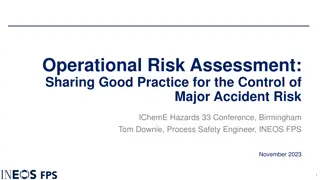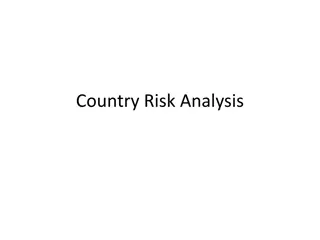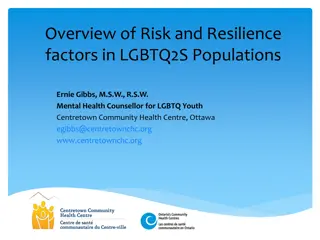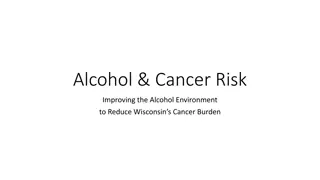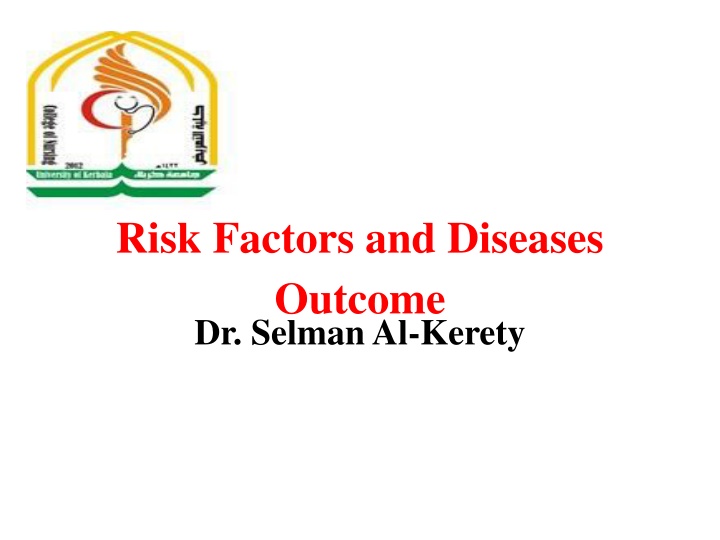
Risk Factors and Disease Outcomes by Dr. Selman Al-Kerety
Learn about the importance of identifying high-risk groups in relation to diseases, the types of risk factors, and various measures of risk such as absolute risk and relative risk. Dr. Selman Al-Kerety explains how these concepts play a crucial role in preventive efforts and public health strategies.
Download Presentation

Please find below an Image/Link to download the presentation.
The content on the website is provided AS IS for your information and personal use only. It may not be sold, licensed, or shared on other websites without obtaining consent from the author. If you encounter any issues during the download, it is possible that the publisher has removed the file from their server.
You are allowed to download the files provided on this website for personal or commercial use, subject to the condition that they are used lawfully. All files are the property of their respective owners.
The content on the website is provided AS IS for your information and personal use only. It may not be sold, licensed, or shared on other websites without obtaining consent from the author.
E N D
Presentation Transcript
Risk Factors and Diseases Outcome Dr. Selman Al-Kerety
Risk can be defined as the probability of an event (such as developing a disease) occurring.
Why should we identify such high risk groups? First, to direct preventive efforts, such as screening programs for early disease detection, to populations who are most likely to benefit from any interventions that are developed for the disease. Second, to identify the specific factors or characteristics that put them at high risk and then try to modify those factors.
risk factors may be of two types: Modifiable: such as obesity, diet, and other lifestyle factors not modifiable: such as age, sex, and race
Several measures of risk: (1)Absolute Risk, (2) Relative Risk Odds Ratios,And (3)Attributable Risk.
ABSOLUTE RISK The incidence of a disease in a population is termed the absolute risk. Absolute risk can indicate the magnitude of the risk in a group of people with a certain exposure, but because it does not take into consideration the risk of disease in non- exposed
The Relative Risk The relative probability of an event (developing a disease) occurring in exposed people compared to the probability of the event in non-exposed people, or as the ratio of the two probabilities. we can put the question another way: What is the ratio of the risk of disease in exposed individuals to the risk of disease in non-exposed individuals? This ratio is called the relative risk: risk can be defined as the
the relative risk is important in establishing etiologic relationships, the attributable risk is in many ways more important in clinical practice and in public health, because it question: How much of the risk (incidence) of disease can we hope to prevent if we are able to eliminate exposure to the agent in question? addresses a different
Attributable Risk The attributable risk, is defined as the amount or proportion of disease incidence (or disease risk) that can be attributed to a specific exposure. For example, how much of the lung cancer risk experienced by smokers can be attributed to smoking? We can calculate the attributable risk for: exposed persons the total population, ( includes both exposed and non-exposed persons)
In epidemiology, a risk factor is a variable associated with an increased risk of disease or infection. Sometimes, determinant is also used, being a variable associated with either increased or decreased risk.
Correlation vs causation Risk factors or determinants are correlational and not necessarily causal, because correlation does not prove causation. For example, being young cannot be said to cause measles, but young people have a higher rate of measles because they are less likely to have developed immunity during a previous epidemic.
General determinants The probability of an outcome usually depends on an interplay between multiple associated variables. When performing epidemiological studies to evaluate one or more determinants for a specific outcome, the other determinants may act as confounding factors, and need to be controlled
Risk marker A risk marker is a variable that is quantitatively associated with a disease or other outcome, but direct alteration of the risk marker does not necessarily alter the risk of the outcome.



